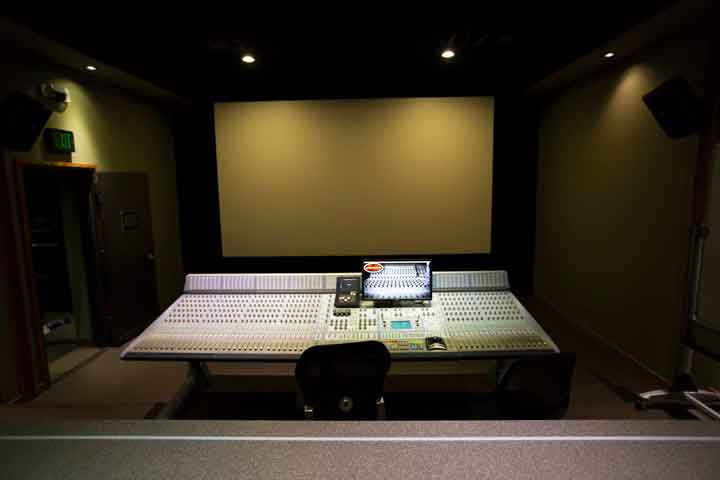Zero Noise Classroom by Google Chrome. How it works: You set a timer for this classroom noise monitor, and current sound levels appear in the background as it runs. Light shades indicate quiet, while darker gray means the classroom has gotten louder. Digital classroom Soundtrap integrates with Noteflight and Flat.io, and also with LMS platforms like Google Classroom, Canvas, Schoology and Musicfirst. Creation, assessment, and evaluation of assignments is smooth and seamless. Soundtrap is committed to being responsive to the future-ready classroom.
Studio teaching is an approach to teaching that can be used to replace the standard lecture approach. It is based on sound pedagogical principles, is very flexible, is popular with students, and leads to superior learning in most instances.What are the characteristics of a studio classroom?
- There are few lectures.
- Students work in groups to learn.
- Activities generally emphasize collaborative and cooperative learning
- The instructors get students going on projects and are on hand as resources.
- Responsibility for learning is placed on the students.
- Class activities build on each other, providing a dynamic and integrated learning environment that emphasizes personal intellectual development as well as content learning.
Why is this good pedagogy?
- Many studies have shown that interactive engagement is a key to meaningful learning and intellectual development.
- Active learning, including cooperative learning and group activities, is the most efficient way to promote student learning, and especially to develop higher order thinking skills.
- While actively engaged, students develop good habits of the mind and the skills needed to be successful lifelong learners.
- Many studies support the notion that 'less is more,' meaning that exposing students to less information -- but covering it in more depth -- can lead to better learning.
- Studio classrooms are ideal for helping students think about their learning and develop better lifelong learning skills.
What sort of activities are involved?
- Emphasis is on cooperative and collaborative activities.
- Projects can include discussions, debates, presentations, paper and pencil exercises, computer projects, work with samples, or any of a number of other things.
- Projects may be multifaceted and can take more than one class session.
- Instructors provide information, by way of short lectures, when needed or on demand, but full-length lectures are rare.
How is a studio class scheduled and managed?
- Classes work best if scheduled in 2-3 hour blocks, but traditional class schedules are workable.
- Students work on complex and demanding projects.
- To avoid boredom and keep students focused, a typical class may include one or several group projects, some discussion and reporting time, and occasionally brief lectures by an instructor.
- Group activities work best when there are 3 or 4 students in each group.
- Students may work on their own time, not just during scheduled class hours.
- Students, also, can be assigned homework that supports the class activities.
What are the keys to success?

- Allow students to control their time and take responsibility for learning.
- Students must be prepared when they come to class (they must do appropriate reading, master appropriate skills, gather needed information, etc.)
- Instructors must help students start on projects, provide resources, and be on hand as resources for students to use.
- Instructors must be mentors, acting as learning guides, not authorities.
- Students must have all the resources they need.
- Students must become comfortable working with other students and using other students as learning resources.
What do students think about studio classrooms?
- Some are surprised when they find out they must attend class and everyone must participate to have a successful class.
- All students report they put in more time than in a standard class.
- This requires some adjustment by students who have not experienced such a classroom environment before.
- Most students, however, do catch on and in the end say that they learn more and have more fun in a studio classroom.
What sort of assessment has been done?
- Anecdotal reports and qualitative evaluations of studio teaching and learning by both instructors and students are overwhelmingly positive.
- Few have conducted quantitative assessments comparing the effectiveness of studio teaching to more traditional approaches.
- Some studies show equal or better content mastery by students in studio classrooms compared with traditional classrooms, but content mastery is only one of many potential teaching goals.
- Perkins (2005) reported on a successful studio Petrology class. A multidimensional assessment showed that students, and the instructor, believed the class did a much better job of promoting learning than a traditional class.
33 E. Ida B. Wells Drive, Lower Level

Fine-tune your skills in our professional-level music production facilities. Used for course projects and in-class instruction, we have three control rooms linked to two studio spaces, complete with absorption/diffusion panels for a variety of instrumental setups and access to the Audio Arts and Acoustics' musical instrument collection, including a Yamaha C7 grand piano.
Recording Studios

Control Room A
Control rooms A and B serve as the main analog/digital music production facilities for Audio Design and Production courses in the Audio Arts and Acoustics Department.
Classroom Sound Studio Background
Control Room B
Control Room C
Control Room C serves as an intimate auditorium space that can accommodate an audience of 25. The room incorporates high-definition video projection and surround sound systems for mixing and listening.